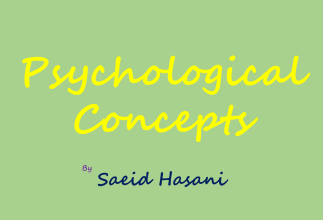If we base our beliefs on human freedom, as the opposite of a deterministic approach, we need to take into consideration that freedom in choices means carrying responsibility for the outcome, which is anxiety-provoking.
Although anxiety is a natural response to life’s ultimate concerns like death, freedom, isolation, and meaninglessness, it doesn’t mean it is “normal.” Unlike neurotic anxiety, existential anxiety is part of being human.
Existential anxiety arises from confronting deep truths about life, such as death, freedom, isolation, and meaninglessness. Existential anxiety is not pathological like neurotic anxiety, which is rooted in specific fears, trauma, or irrational thoughts. It’s a signal that you’re engaging with the big questions of existence.
In this part, my question was: “Don’t all types of anxiety have existential elements?”
The answer is:
Yes — some clinical anxieties do have existential roots.
– A panic attack might be worsened by a fear of death (existential).
– Social anxiety may relate to a deeper fear of isolation or not being accepted (existential).
– Career anxiety might stem from a fear of wasting your life or not fulfilling your potential (existential).
You need to keep in mind that while not all anxiety is existential, many anxieties can be traced back to existential themes. Therefore, existential psychotherapists look for the meaning beneath the symptoms, not just the symptoms themselves — because the same symptoms can have different hidden meanings for different people.
You can step into the zone of existentialism by giving a second thought to these core concepts:
1. Death and mortality: You would do well to direct your lifetime decisions based on the awareness of death at any moment. The more you deny it, the more you live a life of inauthenticity.
2. Isolation: When you realize you are ultimately alone in any relationship, even close ones, it can help you to be more yourself in any connection.
3. Meaninglessness: Life has no inherent meaning, and you need to create your own meaning. In order to do so, you need to look into your experiences as a journey toward finding meaning in your life.
Perhaps this problem rears its ugly head as modernism grows more and more. In modern life, people question and reject religion, tradition, or social roles, and so on. That’s why individuals need to create meaning based on their choices, values, and actions.
And there is no relief in this type of thinking in comparison to conservative one that had pre-written instructions for living. It’s liberating but also terrifying — because there is no universal answer for anything anymore.
As Viktor Frankl put it beautifully: “Life is never made unbearable by circumstances, but only by lack of meaning and purpose.”
4. Authenticity: Societal expectations and the confines of every community force you to bend down on your knees, but if you do so, you are not yourself anymore — you’re a copied version of the people who lived before you. It’s like you’re the shadow of the past.
You need to listen to your internal voice and start acting based on what seems true to you. You may ask, “What if I’m wrong?” That’s good — you had an experience, and you have learned from it. The emphasis is on the alignment between your beliefs and your actions.
5. Being: We’re living in a society. Our life has meaning in relation to others. Relatedness is one of the substantial factors that gives our life meaning.
We’re surrounded by people who are part of a bigger society, which is located somewhere. The geographical and biological factors are two other substantial effects, in addition to relatedness.
We are all located in a place and a time frame, which we can call “context.” Our being is not separate from the context we’re living in.
Heidegger uses the German word “Dasein” to define this idea. Dasein literally means “being there” or “presence.” The key ideas behind this word are:
-
Dasein is “thrown” into the world — we don’t choose when or where we’re born.
-
Dasein is always in the world — we are never separate from our context (relationships, culture, time).
-
Dasein cares — we’re not neutral observers of life; we’re invested in it.
-
Dasein is aware of death — and this shapes how we live.
And by the way, I think you need to know that there are different approaches to existential therapy. Here are four major ones:
1. Existential-Humanistic Therapy (e.g., Rollo May, Irvin Yalom):
Integrates existentialism with person-centered therapy.
Explores authenticity, freedom, isolation, and helps clients find the courage to face existential truths.
2. Logotherapy (Viktor Frankl):
Focuses on finding meaning in life — even in suffering.
Asks: “What is life asking of me right now?”
3. Daseinanalysis (based on Heidegger):
Focuses on being-in-the-world and understanding how you relate to time, space, others, and self.
4. Existential-Integrative Therapy (e.g., Kirk Schneider):
Emphasizes depth, emotional presence, and integrating other modalities like bodywork or psychodynamic insight.
In the next post, I’ll share the case and a step-by-step analysis of it through existential themes.



